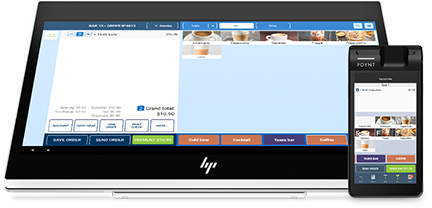
Staffing Tips: How to Find and Retain Top Talent for Your Restaurant6 min read
The restaurant industry has been struggling with a consistently high employee turnover rate well over 70 percent in the last few years. The year 2016 was the sixth consecutive year of annual increase in turnover rates, according to the National Restaurant Association.
There are several reasons why finding and retaining top talent for your restaurant is difficult, such as:
- The restaurant industry is the largest employer of teenagers and college students
- Reliance on seasonal workers also leads to cyclical employment trends
- Upward mobility will often happen only when workers move from one restaurant to another and not in the same organization
- Certain types of restaurants like fast food joints have historically had higher turnover rates than other businesses like gourmet restaurants, for example
Preventing a high turnover rate is very important as statistics show the average restaurant loses $146,000 per year due to high employee turnover. It’s much more expensive to acquire new talent than to keep the workers you already have.
To attract the right employees and to keep them engaged, you’ll need to create the right work conditions and you’ll also have to come up with a suitable HR management strategy.
Determine Your Turnover Rate
Before doing anything else, it’s important to understand and analyze your current employee turnover rate.
You can use a simple formula to determine worker turnover:
Number of employees leaving

Turnover = ————————————————- x 100
Average number employed
Thus, if 20 people left the restaurant during the year and you employ 100 people, your employee turnover rate is 20 percent.
Anything between zero and 25 percent is considered a reasonable and manageable turnover rate. Your corporate culture is obviously working in your favor and professionals are willing to stick around. Employee turnover rates exceeding 75 percent are very troublesome and indicative of serious problems.
If you’ve reached the stage of having such a high turnover rate, you’re dealing with a massive restaurant culture problem or poor staffing choices. You will have to undertake actions really fast in order to cut losses and enhance the functioning of your business.
Look for Employees Familiar with the Industry
The restaurant industry often attracts people who don’t have a lot of experience. Young and making their first career steps, such employees will often use this opportunity for a short period of time before moving on to something else.
Looking for employees that are familiar and experienced in the industry is one of the first steps in terms of increasing the retention rate.
Here’s how to do it:
- If you’re hiring students, choose those specializing within the hospitality industry
- Offer training and internship opportunities that can turn into full-time positions
- Set the right work experience requirements in your job ads
- Partner up with local culinary schools, colleges and universities
- Update job descriptions frequently and be very precise in terms of requirements
- Show people that they have a future in your organization if hired (training programs, bonus systems)
Make Good Use of Employee Referrals
Employee referrals still rank among the best options for the attraction of top industry talent.

In essence, you should offer your top workers incentives to refer others to you. A one-time reward or a financial bonus can result in high quality, relevant referrals.
Modern employee referral programs can be executed in so many ways:
- Make bonuses available for any referral and any position (as long as the new employee sticks around for a certain period of time)
- Offer extra vacation days and social bonuses
- Offer two payments or bonuses (for the referral and after a certain period of time)
- Create a tiered rewards program for different milestones
Your employees should feel proud of the work they do, and they should be willing to recommend the restaurant to experienced industry reps they know. Thus, the employee referral program should be tied to your corporate culture and it should offer incentives worth working for.
Investing in this program makes a lot of sense if you take into consideration the following statistics:
- Employee referral programs have the best return on investment in comparison to other staffing strategies
- The cost per hire is brought down (some companies save $3,000 or even more per hire)
- Referred candidates contribute to a 55 percent faster hiring process
- According to 88 percent of employers, referral programs lead to the acquisition of above-average candidates
Do You Pay Enough? Are There Extras for Good Performers?
Once you acquire reliable workers, you’ll have to start thinking about employee retention strategies.

A good remuneration package is obviously one of the biggest essentials. Additional bonuses and rewards are another important part of corporate culture. These show that effort is getting noticed, making people work harder.
While most restaurants operate on extremely thin profit margins, it’s still crucial to pay workers well in order to retain them.
There are various things you can do to ensure the best performers are getting paid the most:
- Set goals and tie a monetary reward to their accomplishment (for example, maximizing the sales of a certain menu item or generating more revenue from drinks)
- While the above-mentioned goals apply to entire teams, you can also set individual employee goals to encourage a bit of healthy competitiveness
- For a particularly high accomplishment, offer to match the monthly tips generated by the best performer
- Add gift cards to the mix
- Organize retreats/offer vacation packages
- Choose attendance-based systems over performance-based goals for certain types of restaurant employees
- Offer an employee stock ownership plan (ESOP) – a very strong loyalty establishment strategy for top performers
- Create a system of longevity bonuses for those who stick around
Apart from the financial rewards, you could also offer a few non-monetary perks to the best performers.
For example, the best front-of-house staff members could get sections or shifts of preference. Being somewhat flexible shows that you care and you prioritize the needs of the workers. A culture of caring creates the right team dynamics and it has also been proven to increase employee retention.
A solid corporate culture that rewards performance also focuses on training and providing workers with additional opportunities for the acquisition of qualifications. Everything new staff members learn is beneficial for your business.
At the same time, training programs demonstrate your willingness to invest in the knowledge and skills of workers. While some restaurant owners worry that employees will take these new skills and look for a better job elsewhere, industry statistics suggest such fears are unfounded.

The lack of education programs actually leads to disengagement. In a recent study, 80 percent of workers questioned said that learning something new will make them more engaged. Nearly 43 percent of people report they’re bored at work and of these people, 46 percent report the boredom is caused by never learning anything new. Bored workers are two times more likely to leave a restaurant than engaged ones.
To sum it up, employee retention could be a serious challenge for certain kinds of restaurants.
Some industry segments are known for the high employee turnover rate. These rely on young staff members and often, they don’t pay well enough.
A change in hiring practices and the overall corporate culture will be required to curb worker loses. Such changes do take time and they require an investment. Still, putting effort into increasing engagement and loyalty will provide a high return on investment and eventually contribute to the sustainable growth of the restaurant.



